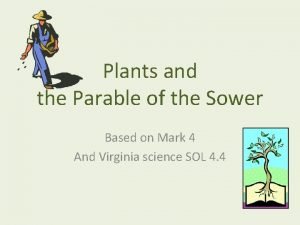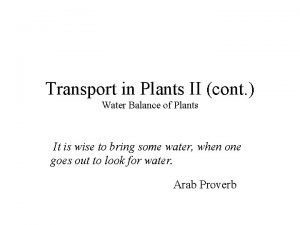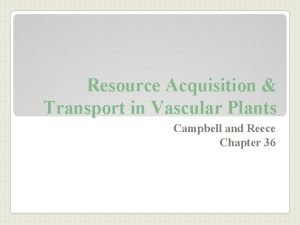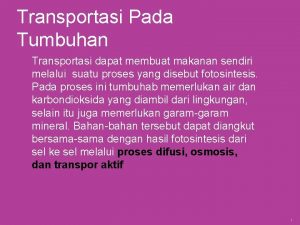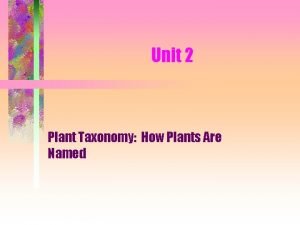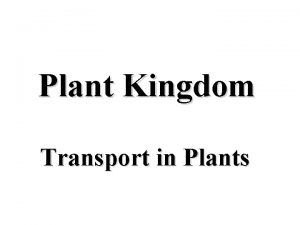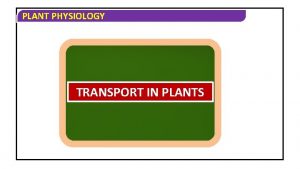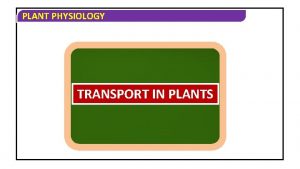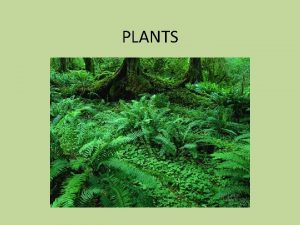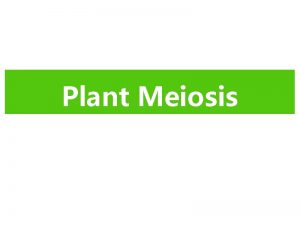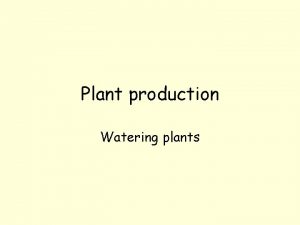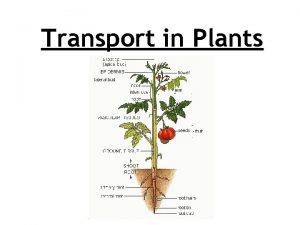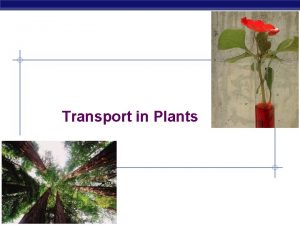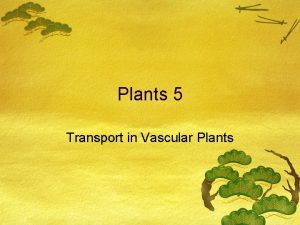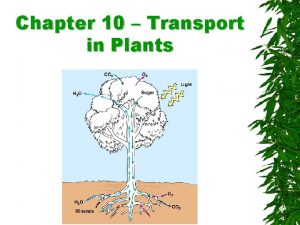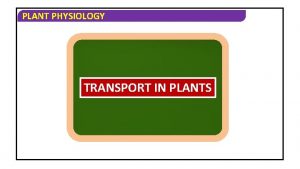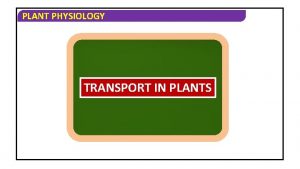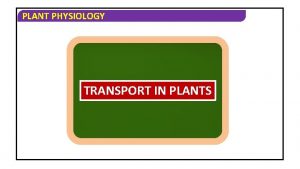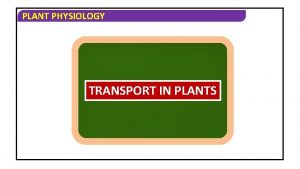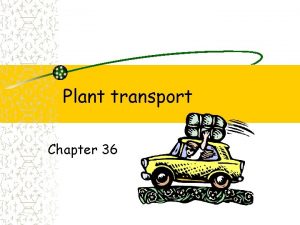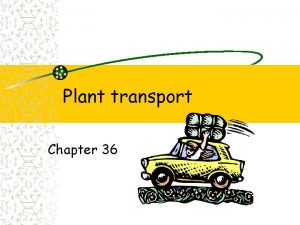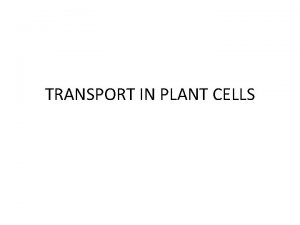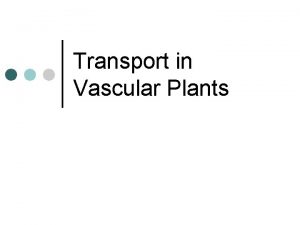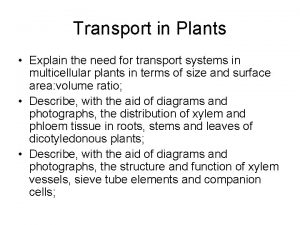PLANT TRANSPORT LECTURE Plants need a way to































- Slides: 31

PLANT TRANSPORT LECTURE Plants need a way to transport materials through their bodies, too. Vascular tissue – cells used by plant to transport nutrients and water.

Types of Vascular Tissue XYLEM – Dead cells that form “pipes” to carry water from roots through leaves. PHLOEM – Tubes made from living cells to transport food; phloem = food

Types of Vascular Tissue XYLEM – Only carries UP PHLOEM – Carries food in all directions (UP and DOWN)

MONOCOTS Definition – Have only one cotyledon (embryo leaf). Example – Corn, grass, tulips.

MONOCOTS LARGE CELLS ARE XYLEM Stem pattern – Scattered xylem and phloem. SMALL CELLS ARE PHLOEM

MONOCOTS Root pattern – fibrous

MONOCOTS Root pattern (xylem and phloem) – ring

MONOCOTS Leaf pattern – veins are parallel

MONOCOTS Flower pattern – parts are in multiple of 3’s.

DICOTS Definition – Have two cotyledons (embryo leaves). Example – Trees, beans, carrots.

DICOTS LARGE CELLS ARE XYLEM Stem pattern – Ringshaped xylem and phloem. SMALL CELLS ON OUTSIDE ARE PHLOEM

DICOTS Root pattern – taproot

DICOTS Root pattern (xylem and phloem) – X-shape

DICOTS Leaf pattern – veins are branched.

DICOTS Flower pattern – parts are in multiples of 4’s or 5’s.

MATERIALS TRANSPORTED XYLEM – WATER DISSOLVED MINERALS HORMONES PHLOEM – FOOD/SUGAR OXYGEN HORMONES

GIRDLING Definition – Removing bark from a tree; fluid leaks out. Why is fluid sweet? Cutting phloem that transports sap (food). End result – Tree dies.

GIRDLING

HOW DOES XYLEM WORK? Successive Osmosis – Water flows high to low Soil root hairs epidermis cortex xylem

HOW DOES XYLEM WORK? Cohesion of water molecules – Water is “sticky”

HOW DOES XYLEM WORK? Transpiration – Leaves “sweat” water which pulls water up xylem tube. More than 90% of water absorbed is lost by leaves. Ex. Tomato plant loses 25 gallons of water per season; corn plant loses 51 gallons.

HOW DOES XYLEM WORK? Turgor presure – Weight of soil pushes down on roots and squeezes water up.



Monocot or Dicot? Dicot Monocot

Monocot or Dicot? Dicot





DICOT ROOT 1 - Epidermis 2 - Cortex Where would root hairs be? How would you know where the starch is?
 01:640:244 lecture notes - lecture 15: plat, idah, farad
01:640:244 lecture notes - lecture 15: plat, idah, farad Slidetodoc downloader
Slidetodoc downloader What minerals do plants need
What minerals do plants need What makes nitrogen
What makes nitrogen Plants
Plants Uniport symport antiport
Uniport symport antiport Primary active transport and secondary active transport
Primary active transport and secondary active transport Now answer the following questions
Now answer the following questions Passive transport vs active transport venn diagram
Passive transport vs active transport venn diagram Unlike passive transport active transport requires
Unlike passive transport active transport requires Primary active transport vs secondary active transport
Primary active transport vs secondary active transport Bioflix activity membrane transport active transport
Bioflix activity membrane transport active transport Active transport image
Active transport image Selectively permeable definition biology
Selectively permeable definition biology Symbiotic relationship
Symbiotic relationship What does phloem transport
What does phloem transport Resource acquisition and transport in vascular plants
Resource acquisition and transport in vascular plants Vascular plants
Vascular plants Vascular plants vs nonvascular plants
Vascular plants vs nonvascular plants Classification of non flowering plants
Classification of non flowering plants C3 plant
C3 plant Two raw materials necessary for photosynthesis
Two raw materials necessary for photosynthesis Summary equation for cellular respiration
Summary equation for cellular respiration Basic need of plant
Basic need of plant Pengangkutan vaskuler adalah
Pengangkutan vaskuler adalah How plants are named
How plants are named What's a frequency table
What's a frequency table Two way anova
Two way anova Differentiate between binary tree and threaded binary tree
Differentiate between binary tree and threaded binary tree Perbedaan one way dan two way anova
Perbedaan one way dan two way anova One way anova null hypothesis
One way anova null hypothesis One way anova vs two way anova
One way anova vs two way anova




